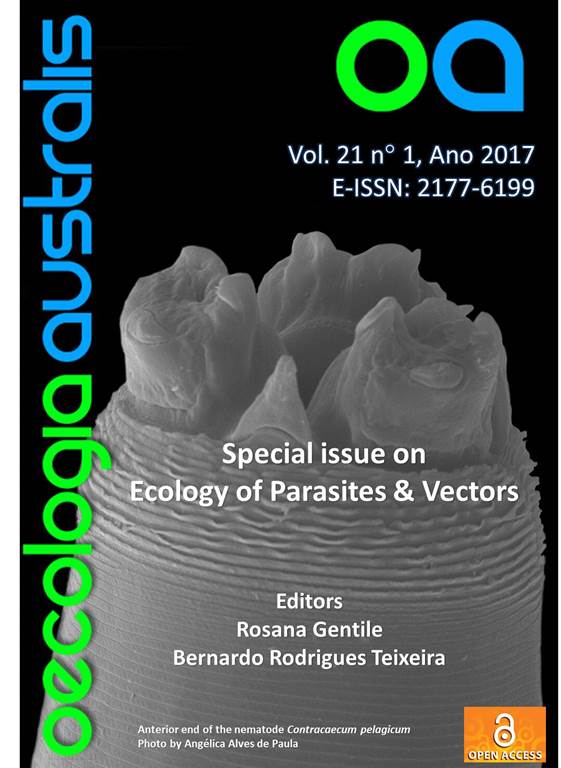POPULATION STRUCTURE OF THE NEMATODE Contracaecum pelagicum JOHNSTON & MAWSON, 1942 DURING THE WINTER MIGRATION OF THE MAGELLANIC PENGUIN Spheniscus magellanicus (FORSTER, 1781) IN SOUTHERN BRAZIL
DOI:
https://doi.org/10.4257/oeco.2017.2101.07Keywords:
Anisakidae, Helminths, Larvae, Marine birds, ParasiteAbstract
Magellanic penguins, Spheniscus magellanicus, are frequently found on the coast of Brazil during the winter migration. However, there are very few ecology studies on the parasite fauna of these birds, especially on the adults that die on the Brazilian coast. Moreover, no studies on parasites of Magellanic penguins found on the Brazilian coast, done so far, have considered evaluating adult or larvae nematodes during winter migration, in comparison with what was verified in colonies in Argentina. Thus, this work is the first one in which parasitism by anisakid nematodes was evaluated in young and adult specimens of S. magellanicus found dead on beaches of the southern region of Brazil. In this study the sex of the hosts, the development stages and sex of the parasites, as well as the preferred sites of infection were taken under consideration. For this purpose, the gastrointestinal tract of 36 specimens of Magellanic penguin found dead along the coast of Paraná and Rio Grande do Sul states, in southern Brazil, were analyzed. The nematode fauna was compound by a single species, the anisakid, Contracaecum pelagicum. In Rio Grande do Sul, the young specimens of S. magellanicus were more intensely and abundantly parasitized by C. pelagicum than the adult ones. The stomach and intestine were the organs that showed higher mean density of infection by adult and larvae nematodes, respectively, in the hosts collected in both locations. A high prevalence was observed in both areas although no correlation with the sex of the hosts on the parasitism index was detected. In total, the young Magellanic penguins found on Paraná coast were, in average, less parasitized than the ones found on Rio Grande do Sul. These results in conjunction with data available on the the literature suggest a latitudinal variation on parasitism indexes of C. pelagicum related to changes in diet of Magellanic penguin along its winter migration in the Southwestern Atlantic Ocean.


